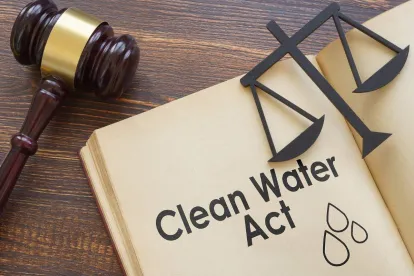EPA is publishing its final rule specifying the role of States and Tribes in the Federal licensing or permitting of activities that may result in a "discharge" into a "Water of the United States". Like EPA's recent tenth attempt to define "Waters of the United States" , EPA's Water Quality Certification rule is almost certainly heading to court.
As some of you know, Section 401 of the Clean Water Act requires that States and Tribes have the opportunity to certify their acceptance of activities that may result in a "discharge" into a "Water of the United States" before the Federal government issues a permit or license authorizing those activities. That certification can specify enforceable conditions beyond those the Federal Government might impose.
Examples of activities requiring certification include dredging, the generation of hydroelectricity, and discharges of "pollutants" authorized by NPDES permits, including construction permits.
During the Trump Administration EPA made it harder for States and Tribes to flex their section 401 muscle. EPA has now reversed that and gone a considerable distance in the opposite direction. As EPA's related press release makes clear, including with a strong statement of support from my Governor, Maura Healey, EPA's new rule is very popular in "blue" states. But, as Bobby Magill reports for Bloomberg, it is equally unpopular in many "red" states.
The two aspects of EPA’s rule which I think will be of most interest to the current Supreme Court are what was formerly proposed as the “activity as a whole” provision and the “potential” for a discharge provision.
Just months after the Supreme Court defined Waters of the United States more narrowly than EPA and the Corps of Engineers have defined it for over thirty years, EPA says States and Tribes can prevent the issuance of a Federal permit of a “discharge” to a Waters of the United States if a State or Tribe concludes that the “activity” associated with the discharge will have adverse impacts on water quality whether or not the waters impacted are Waters of the United States.
Now, according to Mr. Magill, EPA responds that it dropped from its rule "as a whole" language that it previously proposed. That's absolutely true. But it is equally true that in doing so it exclaims “[t]his does not represent a change in substance from proposal. The Agency does not interpret the terms ‘activity’ and ‘activity as a whole’ as having different meanings.”
And EPA specifically allows for the possibility that the state and tribal laws that a State or Tribe can consider in determining whether or not to provide a certification can include state and tribal laws regarding water quality other than relating to the quality of Waters of the United States.
In other words, as I told Mr. Magill, EPA is saying that a State or Tribe can effectively prohibit an activity under the Federal Clean Water Act that the Federal Government could not prohibit under the same Act.
On the one hand, that may very well be the best thing for human health and the environment, especially given the fact that the Federal Government's Clean Water Act jurisdiction is now narrower than it has been in a generation.
On the other hand, based on what Justice Alito, writing for a solid majority of the Supreme Court, had to say in Sackett v. EPA about Congress’s intent in passing the Clean Water Act, I think it likely that same Sackett majority is going to have trouble with EPA’s suggestion that the Clean Water Act allows for this exercise of “cooperative federalism”.
The other element of EPA's rule that I think the Supreme Court may find problematic has to do with the requirement that a State or Tribal certification is required if there is the “potential” for a discharge to a Water of the United States. EPA explicitly rejected suggestions that it should define what “potential” or, more specifically, “may result”, means. There can be no doubt that “potential” means different things to different people and that, sooner rather than later, someone responsible for a State or Tribal certification is going to apply “potential” in a way that a Court finds unsustainable.
Other aspects of the new rule worthy of mention are the requirement that a would-be permittee seek a pre-filing meeting with the States or Tribes with certification rights before filing their applications for certification, the authorization of States and Tribes to make their own judgments regarding the water quality related information they need to see before acting on a request for certification, and the continued allowance of States and Tribes requiring permit applicants to withdraw their applications so that the State or Tribe isn’t required to act on the application in the six months to one year in which action would otherwise be required.
What is certain is more uncertainty for the regulated community and more litigation as the longest running controversy in environmental law plays out in our courts until Congress decides to resolve it.
{EPA is staying that a State or Tribe can effectively prohibit an activity under the Federal Clean Water Act that the Federal Government could not prohibit,” Porter said. “Based on what Justice Alito had to say in Sackett v. EPA about Congress’ intent in passing the Clean Water Act, I think it likely that the Sackett majority is going to have trouble with EPA’s suggestion that the Clean Water Act allows this exercise of ‘cooperative federalism,’” Porter said.




 />i
/>i
